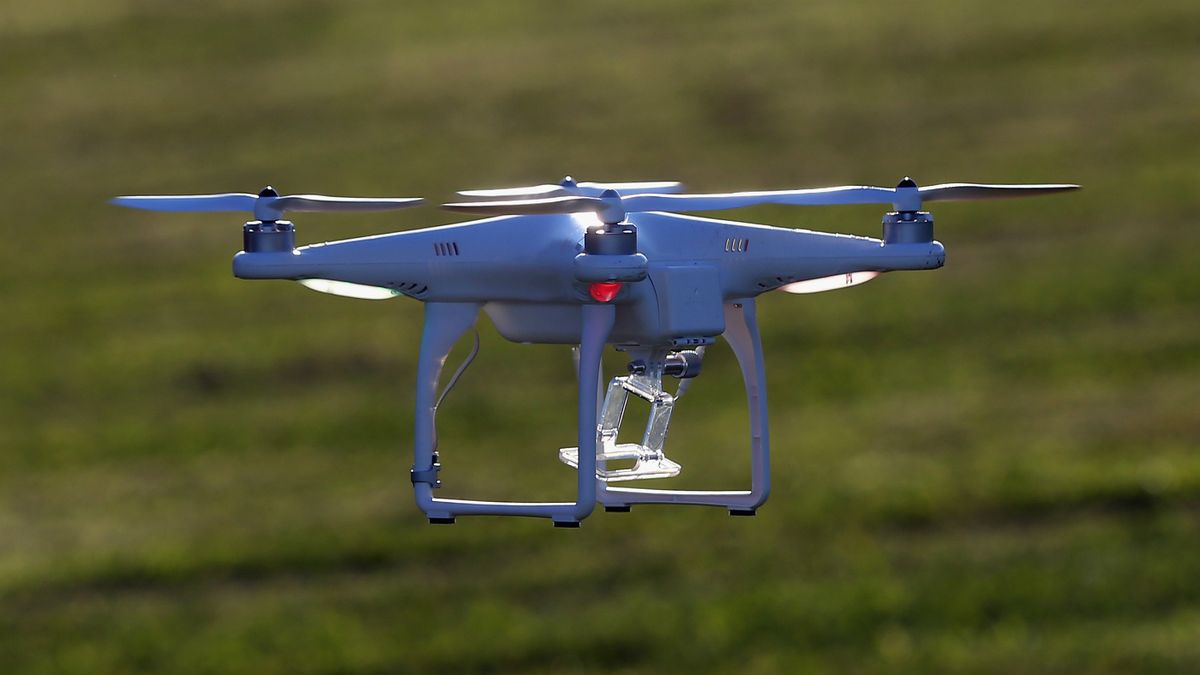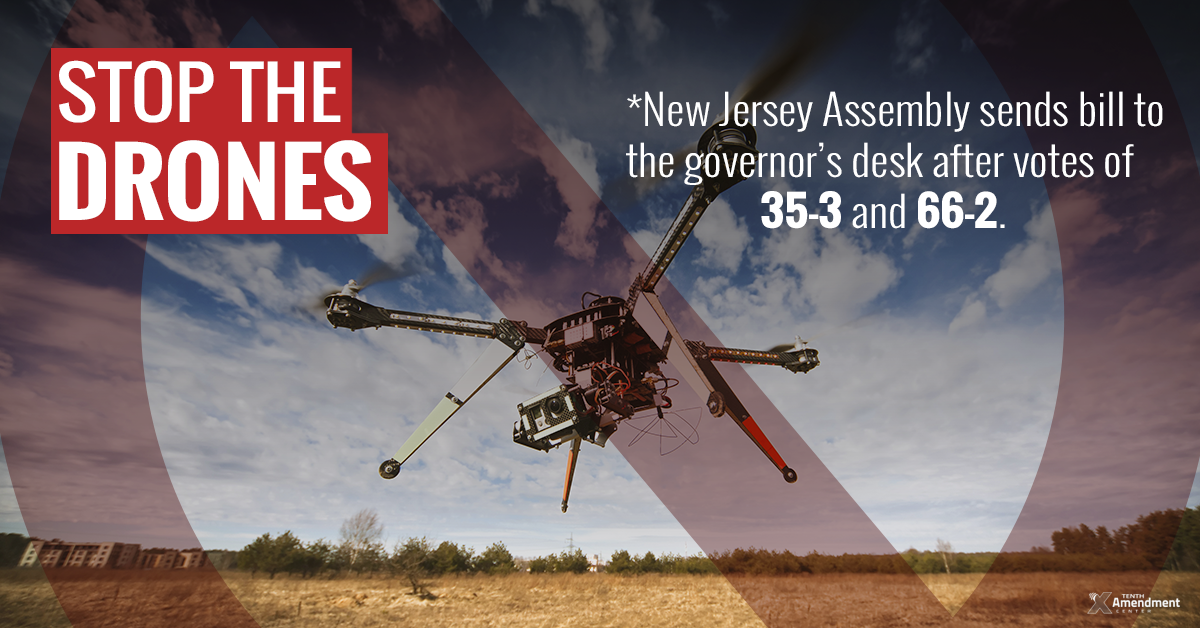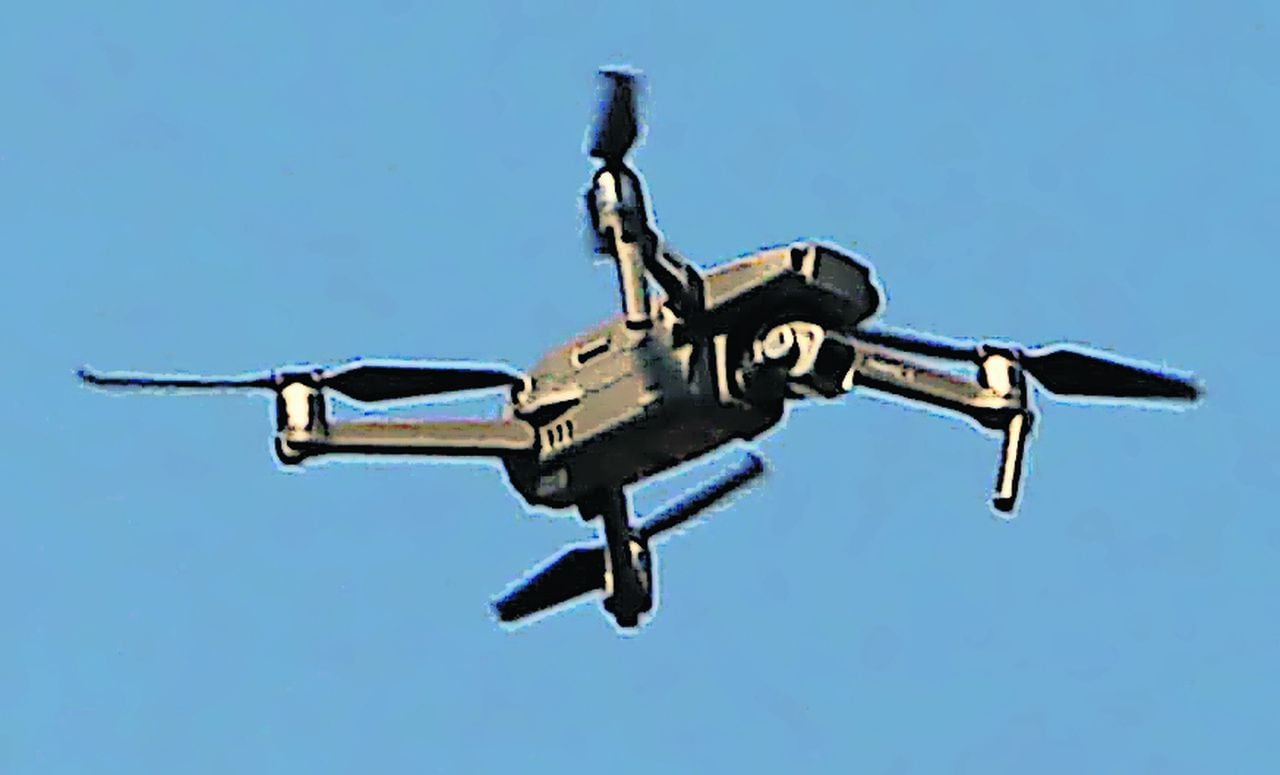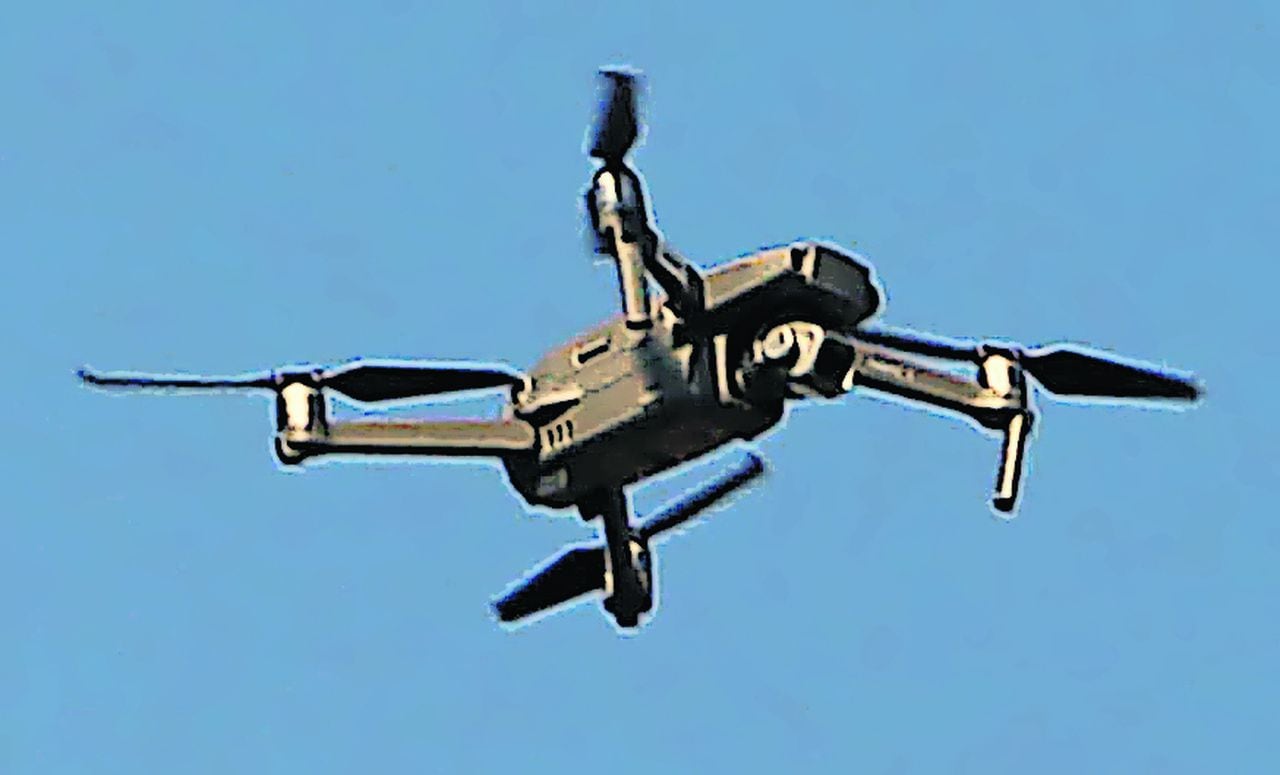Drones Over New Jersey Solved: This comprehensive analysis delves into the multifaceted world of drone operations within the Garden State, examining legal frameworks, incident statistics, technological solutions, public perception, and detailed case studies of successfully resolved drone-related incidents. We explore the evolving landscape of drone technology and its impact on New Jersey communities, highlighting both challenges and advancements in safety and regulation.
From understanding New Jersey’s specific drone laws and penalties for violations to exploring the effectiveness of drone detection technologies and addressing public safety concerns, this exploration provides a balanced perspective on the complexities of integrating unmanned aerial vehicles into a densely populated state. We examine successful case studies to illustrate how investigations are conducted and how these incidents have shaped current regulations and best practices.
Legal Aspects of Drone Operation in New Jersey
Navigating the legal landscape of drone operation in New Jersey requires understanding the state’s specific regulations and potential penalties. This section Artikels the key legal considerations for drone pilots in the state.
New Jersey Drone Laws
New Jersey’s drone laws largely align with federal regulations established by the Federal Aviation Administration (FAA). These regulations cover areas such as registration requirements for drones exceeding a certain weight, operational limitations near airports and sensitive locations, and restrictions on flying over people without their consent. State-specific laws may further restrict drone usage in certain areas or for specific purposes, such as those involving law enforcement or surveillance.
For instance, New Jersey may have additional regulations concerning drone use near critical infrastructure or during emergencies.
Penalties for Violating Drone Regulations
Violating New Jersey’s drone regulations can result in a range of penalties, including fines, license suspension, and even criminal charges depending on the severity of the violation. Penalties can vary based on factors such as the nature of the infraction, the intent of the operator, and any resulting harm or damage. For example, unauthorized drone operation near an airport could lead to significant fines and potential criminal prosecution.
Examples of Drone-Related Legal Consequences in New Jersey
While specific case details are often kept confidential, several examples illustrate the potential legal repercussions of improper drone use. A hypothetical case might involve a drone operator flying recklessly near a populated beach, causing a near-miss with beachgoers. This could result in fines, community service, and mandatory drone safety training. Another example might be unauthorized drone surveillance leading to privacy violations, resulting in civil lawsuits and potential criminal charges.
Data on the number of prosecutions and fines levied specifically in New Jersey is not readily available publicly, however, national trends suggest an increase in enforcement actions as drone technology becomes more prevalent.
Comparison of New Jersey Drone Laws with Neighboring States
New Jersey’s drone laws are generally consistent with those of neighboring states like New York, Pennsylvania, and Delaware. All states primarily follow FAA guidelines, but minor variations exist in specific local ordinances. For example, a neighboring state might have stricter regulations concerning drone use in wildlife preserves or national parks. A thorough comparison would require reviewing each state’s specific statutes and local ordinances.
Hypothetical Drone Incident and Legal Implications
Imagine a drone equipped with a high-resolution camera is used to capture footage of a private residence without the owner’s consent. Under New Jersey law, this could be considered a violation of privacy, potentially leading to civil lawsuits and criminal charges. The severity of the penalties would depend on the context, including the intent of the drone operator and the nature of the footage obtained.
The presence of any aggravating factors such as dissemination of the footage could increase the potential penalties. A strong defense would likely require demonstrating lack of intent or proving that the property was not truly private.
Common Drone-Related Incidents in New Jersey
Understanding the types of drone incidents occurring in New Jersey is crucial for implementing effective safety measures and improving public awareness. This section details the most frequent incidents, their causes, and locations.
Frequent Drone Incidents in New Jersey
Based on available (though limited) public data and news reports, the three most frequent types of drone incidents in New Jersey likely include near-misses with aircraft, unauthorized flights over restricted areas (such as airports or critical infrastructure), and privacy violations. Accurate statistics are difficult to obtain due to underreporting and the decentralized nature of incident reporting.
The recent concerns regarding unauthorized drone activity over New Jersey seem to have been resolved. This highlights the importance of proper drone operation and licensing, a subject well-covered by resources such as the information available on obtaining a transport canada drone license , which is crucial for safe and legal drone operation in Canada. Hopefully, similar regulatory clarity will continue to improve drone safety and responsible use in New Jersey and elsewhere.
Statistics on Drone-Related Incidents, Drones over new jersey solved
Precise statistics on drone-related accidents, near misses, and law enforcement interventions in New Jersey are not readily available through a single, centralized source. However, anecdotal evidence from news reports and FAA data suggests a gradual increase in incidents mirroring national trends. Further research into local law enforcement and FAA databases would be needed to provide more detailed statistics.
Incident Location (Urban, Suburban, Rural)
Drone incidents are likely to occur across all areas of New Jersey – urban, suburban, and rural. However, the types of incidents may vary depending on the location. Urban areas might see more near-misses with aircraft and privacy violations, while rural areas might experience more incidents related to unauthorized flights over private property. Suburban areas might see a mix of both.
Again, more detailed data is needed to confirm these suppositions.
Causes and Contributing Factors of Incidents
Several factors contribute to drone incidents. Pilot error, including lack of training and awareness of regulations, is a major cause. Malfunctioning equipment, adverse weather conditions, and intentional misuse are also contributing factors. Lack of public awareness about drone safety regulations also plays a significant role.
Summary Table of Drone Incidents
| Incident Type | Cause | Location | Date (Example) |
|---|---|---|---|
| Near-miss with aircraft | Pilot error (lack of awareness of airspace restrictions) | Suburban | October 26, 2023 (Hypothetical) |
| Unauthorized flight over private property | Intentional misuse | Rural | November 15, 2023 (Hypothetical) |
| Privacy violation | Unauthorized surveillance | Urban | December 2, 2023 (Hypothetical) |
Technological Solutions for Drone-Related Problems
Addressing the challenges posed by drones requires the implementation of advanced detection and counter-drone technologies. This section explores the potential of these technologies in New Jersey.
Drone Detection and Counter-Drone Technologies
Various drone detection systems are available, ranging from simple radar-based solutions to more sophisticated AI-powered systems capable of identifying and tracking specific drones. These systems can be used to monitor airspace, detect unauthorized drones, and even disable malicious drones. The effectiveness and cost of these systems vary greatly, with more advanced systems offering greater accuracy but at a higher price point.
Comparison of Drone Detection Systems
A comparison of different drone detection systems would need to consider factors such as range, accuracy, the ability to discriminate between friendly and hostile drones, cost, and ease of deployment and maintenance. For example, a radar-based system might offer a wider range but less accuracy than an optical system, and an AI-powered system might be more expensive but more effective in identifying specific drone models.
The optimal system would depend on the specific application and budget.
Successful Implementations of Counter-Drone Measures
While specific examples of successful counter-drone implementations in New Jersey are not publicly available, successful deployments in other locations demonstrate the effectiveness of these technologies. For example, airports have successfully used radar and RF-based systems to detect and deter unauthorized drone flights. Similarly, large events have utilized counter-drone systems to prevent unauthorized aerial surveillance. The success of these implementations depends on factors such as system reliability, operator training, and integration with other security measures.
Privacy Concerns Associated with Drone Detection Systems
Widespread deployment of drone detection systems raises potential privacy concerns. These systems might inadvertently collect data on legitimate drone users or even capture images of private property. Addressing these concerns requires careful consideration of data privacy regulations and the implementation of appropriate safeguards to protect individual privacy. This could involve data minimization, anonymization, and clear guidelines on data usage and storage.
Hypothetical Drone Detection System for a Specific Location

A hypothetical drone detection system for the New Jersey State House in Trenton could utilize a combination of radar, optical, and RF sensors integrated with a centralized monitoring system. This system would monitor airspace around the State House, alert security personnel to unauthorized drone activity, and potentially utilize jamming technology to disable malicious drones. Limitations of such a system might include interference from other RF sources, limitations in range, and the potential for false positives.
A robust system would require continuous maintenance and updates to counter evolving drone technologies.
The recent increase in unauthorized drone activity over New Jersey prompted a swift response from authorities. This situation highlights the need for advanced air mobility solutions, and companies like archer aviation , developing innovative eVTOL aircraft, could play a crucial role in managing future airspace. Ultimately, responsible drone operation and technological advancements are key to resolving similar incidents in New Jersey and elsewhere.
Public Perception and Safety Concerns: Drones Over New Jersey Solved
Public perception of drones in New Jersey is a complex issue, encompassing both excitement about the technology’s potential and concerns about safety and privacy. This section explores these aspects.
Public Perception of Drones in New Jersey
Public perception of drones in New Jersey likely reflects national trends, with a mixture of positive and negative views. Some people see drones as innovative tools with applications in various fields, while others are concerned about potential misuse, privacy violations, and safety risks. Public opinion is likely influenced by media coverage, personal experiences, and awareness of drone regulations.
Key Safety Concerns Related to Drone Operation
Key safety concerns related to drone operation in populated areas of New Jersey include collisions with aircraft, injuries to people on the ground, and damage to property. Unauthorized flights over sensitive locations like hospitals, schools, and power plants also pose significant safety risks. The potential for drones to be used maliciously, such as carrying explosives, is another significant concern.
Public Education Initiatives Promoting Safe Drone Use
Several organizations, including the FAA and local law enforcement agencies, conduct public education initiatives to promote safe drone use. These initiatives may involve workshops, online resources, and public service announcements aimed at increasing awareness of drone regulations and safety best practices. The effectiveness of these initiatives depends on their reach and engagement with the public.
Role of Media Coverage in Shaping Public Opinion
Media coverage plays a significant role in shaping public opinion about drones. News reports on drone incidents, both positive and negative, influence public perception. Responsible reporting that accurately reflects both the benefits and risks of drone technology is crucial for fostering informed public discourse.
Recommendations for Improving Public Safety
- Strengthening drone regulations and enforcement.
- Expanding public education campaigns on safe drone operation.
- Investing in drone detection and counter-drone technologies.
- Promoting responsible drone use through industry best practices.
- Developing clear guidelines for drone operation near critical infrastructure.
Case Studies of Solved Drone Incidents
Analyzing solved drone incidents provides valuable insights into investigative methods and informs future regulations and safety practices. This section presents three hypothetical case studies.
Case Study 1: Unauthorized Flight Near Airport
A drone was observed flying near Newark Liberty International Airport, violating restricted airspace. The FAA, in conjunction with local law enforcement, tracked the drone’s signal, identified the operator through registration information, and issued a substantial fine and mandatory safety training. The investigation highlighted the importance of registering drones and adhering to airspace restrictions.
Case Study 2: Drone Used in a Crime

A drone was used to deliver contraband to a prison. Law enforcement used video surveillance and cell phone tracking to identify the drone operator and the recipients of the contraband. This led to multiple arrests and convictions, demonstrating the potential for drones to be used in criminal activities and the need for effective countermeasures.
Case Study 3: Privacy Violation
A drone equipped with a high-resolution camera was used to capture footage of a private residence without the owner’s consent. The homeowner filed a civil lawsuit, and the court ordered the drone operator to pay damages and delete the footage. This case emphasized the importance of respecting privacy rights and the legal consequences of unauthorized drone surveillance.
Comparison of Investigative Methods
The investigations in these hypothetical cases utilized various methods, including signal tracking, video surveillance, cell phone tracking, and witness testimony. The effectiveness of each method depended on the specific circumstances of the incident and the availability of evidence. The successful resolution of these cases highlights the importance of collaboration between different agencies and the utilization of multiple investigative techniques.
Common Elements Among Solved Cases
A common element among these hypothetical cases is the importance of drone registration and adherence to regulations. Successful investigations often rely on readily available information such as drone registration data. Furthermore, all cases involved some form of evidence collection, whether it be through signal tracking, video footage, or witness statements. This emphasizes the importance of technological advancements in drone detection and the need for robust investigative procedures.
Impact on Drone Regulations and Safety Practices

The outcomes of these hypothetical cases have informed current drone regulations and safety practices by highlighting the need for stricter enforcement, increased public awareness, and the development of effective countermeasures. These cases underscore the importance of responsible drone use and the consequences of violating regulations. The hypothetical cases highlight the evolving nature of drone-related crime and the need for continued adaptation in both law enforcement and regulatory frameworks.
The successful resolution of drone incidents in New Jersey underscores the importance of proactive regulation, technological innovation, and public awareness. By understanding the legal landscape, leveraging advanced detection systems, and fostering responsible drone usage, New Jersey can continue to navigate the challenges and opportunities presented by this rapidly evolving technology. The case studies presented demonstrate the effectiveness of collaborative efforts between law enforcement, technology developers, and the public in ensuring safe and responsible drone operations within the state.
Expert Answers
What are the most common reasons for drone accidents in New Jersey?
Pilot error, mechanical malfunctions, and airspace violations are frequently cited causes.
How can I report a drone incident in New Jersey?
Contact your local law enforcement agency or the Federal Aviation Administration (FAA).
Are there specific airspace restrictions for drones in New Jersey?
Yes, restrictions exist near airports, critical infrastructure, and populated areas. Check FAA regulations and local ordinances.
What is the FAA’s role in regulating drones in New Jersey?
The FAA sets national standards for drone operation, while local authorities enforce specific regulations within their jurisdictions.
